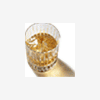Tuthilltown's Hudson Whiskey Is Not Whiskey In Europe.
This topic has been inactive for at least 365 days, and is now closed. Please feel free to start a new thread on the subject!

By
cowdery
in Premium Bourbons/Specialty Bottlings
By using this site, you agree to our Terms of Use.
Recommended Posts